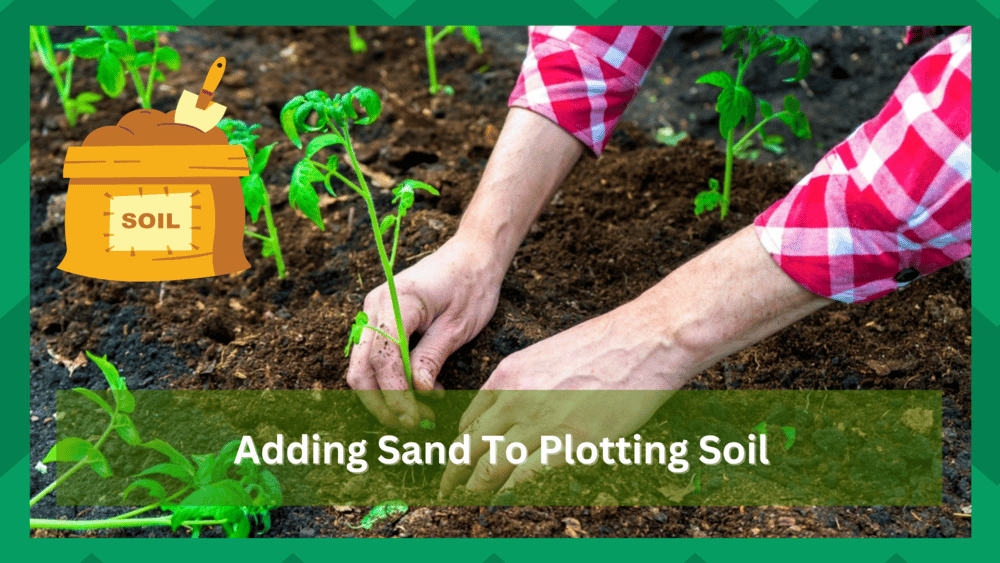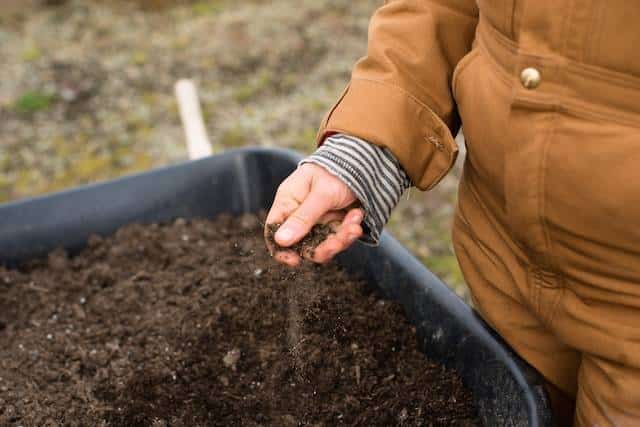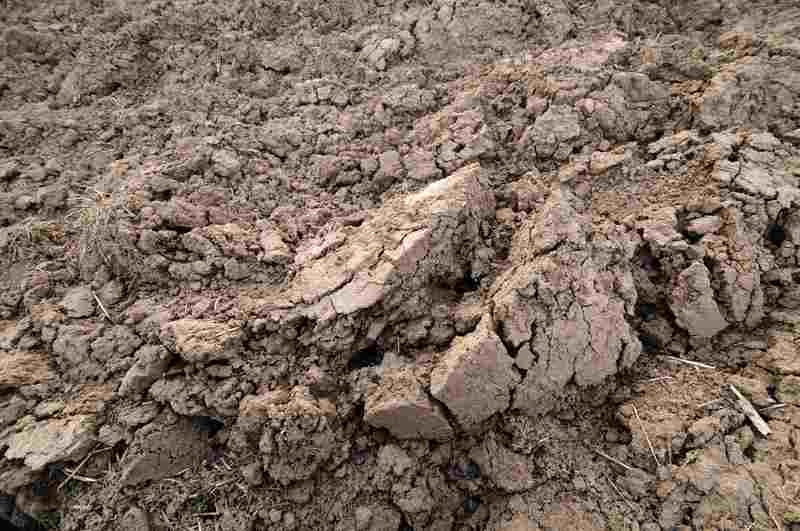
The drainage of the soil, along with the nutrient content, will determine the health of your garden.
Even though many brands offer unique potting mixtures for beginners, it is best to learn how to balance the soil nutrients according to your plants’ requirements. That way, you will have more control over your garden’s health and growth rate.
A common question that beginners usually ask is whether or not it is beneficial to add sand to the potting soil. Let’s briefly cover this topic to help you with a clear understanding.
Adding Sand to Potting Soil
The answer to this question depends entirely upon your plants’ requirements and the potting mixture’s structure.
Ideally, adding sand to the potting soil is beneficial when the soil is not draining properly. By adding in the sand, the water drainage for your potting soil will improve substantially.
If you’re noticing poor drainage and a muddy mixture in your pot, it might be a good time to add some sand. Even though sand won’t improve the nutrient content, you will still get sufficient improvement in drainage.
The sand also helps gardeners maintain the dryness in the potting mixture. So, if you’re using plants that prefer a dry potting mixture, then adding sand is the right option.
Before adding sand to the potting soil, you must ensure that sand is the correct solution for the potting mixture. To do that, you should inspect the first two inches of the potting soil.
If there is excessive moisture in the first two inches and the potting mix has turned into a muddy mixture, then you need to add sand.
However, if the problem is not related to water drainage, then there is no point in adding sand to the mixture.
If you’re noticing stunted growth in the plants, then that is likely because of fewer nutrients in the soil. In this scenario, consider using compost or fertilizer in the potting soil. Depending on the type of nutrient deficiency, you can choose various fertilizers for your soil.
With that said, you should also consider expert opinion before adding something to your potting soil. You might identify the problem incorrectly or use the wrong dosage in the potting soil. Doing so will cause long-term damage to the plant, and it is quite hard to get them to recover afterward.
What is the right way of adding Adding Sand to Potting Soil?
Adding sand to potting soil is a great way to improve the drainage of your soil and help ensure that your plants get enough oxygen.
It can also amend clay-like soils, helping them become more porous and aerated. Sand should be at most 20% of the total potting mix volume, as too much will prevent water from being absorbed by the roots.
When adding sand to potting soil, it’s important to use coarse builders’ sand rather than fine horticultural or play pit sand. This type of sand has larger particles which are less likely to compact over time.
Adding organic matter such as compost or aged manure is recommended when sandy soils retain moisture and nutrients more effectively.
It is important to mix the sand into the potting soil before use thoroughly. This will ensure that the particles are evenly distributed throughout and that your plants receive an even amount of nutrients and oxygen.
After adding sand to the potting soil, it is also important to water the soil thoroughly to help settle any remaining particles. This will also help ensure that plants receive adequate moisture and that their roots can develop properly.
Adding sand to potting soil can be a great way to improve drainage and aeration, but it should always be done carefully to avoid compaction or nutrient imbalances.
With the right combination of organic matter, compost, and sand, your plants will have the perfect environment for healthy growth.
What can go wrong when adding sand to potting soil?
Adding sand to potting soil can greatly improve drainage and aeration, but it’s important to use the right type of sand. If you don’t take certain precautions when adding sand to your potting mix, you could end up with a recipe far from ideal for growing plants.
For starters, not all types of sand are suitable for mixing into potting soil. Coarse builders’ sand is too large and will cause waterlogging and poor drainage instead of improving it. It would help if you had sharp-edged silica or horticultural-grade washed coarse river sand instead.
The amount of added sand should also be carefully measured – using too much can make the soil excessively dry or even toxic for some plants due to salt build-up over time.
The ratio should usually be no more than 25% (by volume) perlite/vermiculite plus 50% compost/peat moss plus 25% coarse river or silica sand – anything more than this won’t provide any additional benefit but may harm plant growth in the long run if used incorrectly.
Never add beach or playbox sandbox as these contain impurities that can damage delicate root systems and stunt plant growth over time.
In summary, when adding sand to potting soil, make sure you’re using the right type of sand, measure the amount carefully, and avoid the beach or sandbox sands altogether. With a little planning and effort, you can improve your potting mix for optimal plant growth!
What is the recommended season to add sand to potting soil?
Adding sand to potting soil effectively improves drainage and aeration and provides essential nutrients for plants.
While adding sand can be beneficial in any season, the best time of year to do so is during the spring or summer months. This allows plants extra time to adjust to the new soil conditions before winter sets in.
When adding sand to potting soil, it’s important to use a coarse-grained type such as builders or washed river sand.
Coarse-grained sands allow for better water drainage and air circulation than finer-grained sands like beach sand or playbox sand which can become compacted over time and inhibit root growth.
Sand should be added at a rate of ¼ cup per gallon of potting mix, but this may vary depending on the type of plant being grown and its particular needs.
It’s also important not to add too much at once; instead, gradually add small amounts over several weeks until you reach your desired consistency.
With these simple steps, you’ll ensure that your potting soil has just the right amount of nutrients and aeration needed for healthy plant growth all year round!
What happens if you add too much sand to potting soil?
Adding too much sand to potting soil can have a detrimental effect on the health of your plants. Sand is not necessary for potting soil but may be added for drainage in certain circumstances.
However, adding too much sand to your potting soil mix can create an unfavorable environment for plant growth and development.
The excess sand will cause the soil to become overly dry and compacted, preventing water from draining properly and leading to poor aeration, which can suffocate roots and stunt growth.
Excessive amounts of sand reduce the soil’s ability to hold nutrients essential for healthy plant growth. As such, adding too much sand could lead to nutrient deficiencies in your plants over time.
Potting soil with too much sand can be difficult to work with and make it harder for your plants to establish healthy root systems.
Adding too much sand to your potting soil mix is not recommended, as it can harm your plants’ health.
When using sand in potting soil, follow the instructions carefully and only add a minimal amount. This will help you create an ideal environment for your plants to thrive.
To Conclude
Adding sand to the potting soil is only beneficial when you need to improve the water drainage of the mixture. Using sand also makes the mixture dry, and it is best suited for plants that don’t prefer a moist potting mixture.
With that said, adding sand to the soil does not bring any nutritional benefits to the table.
So, if you’re noticing some nutrition deficiency in your plant, it might be better to use a composting mixture or fertilizer. That way, the nutrient content of the soil will improve to keep up with the plant’s requirements.




